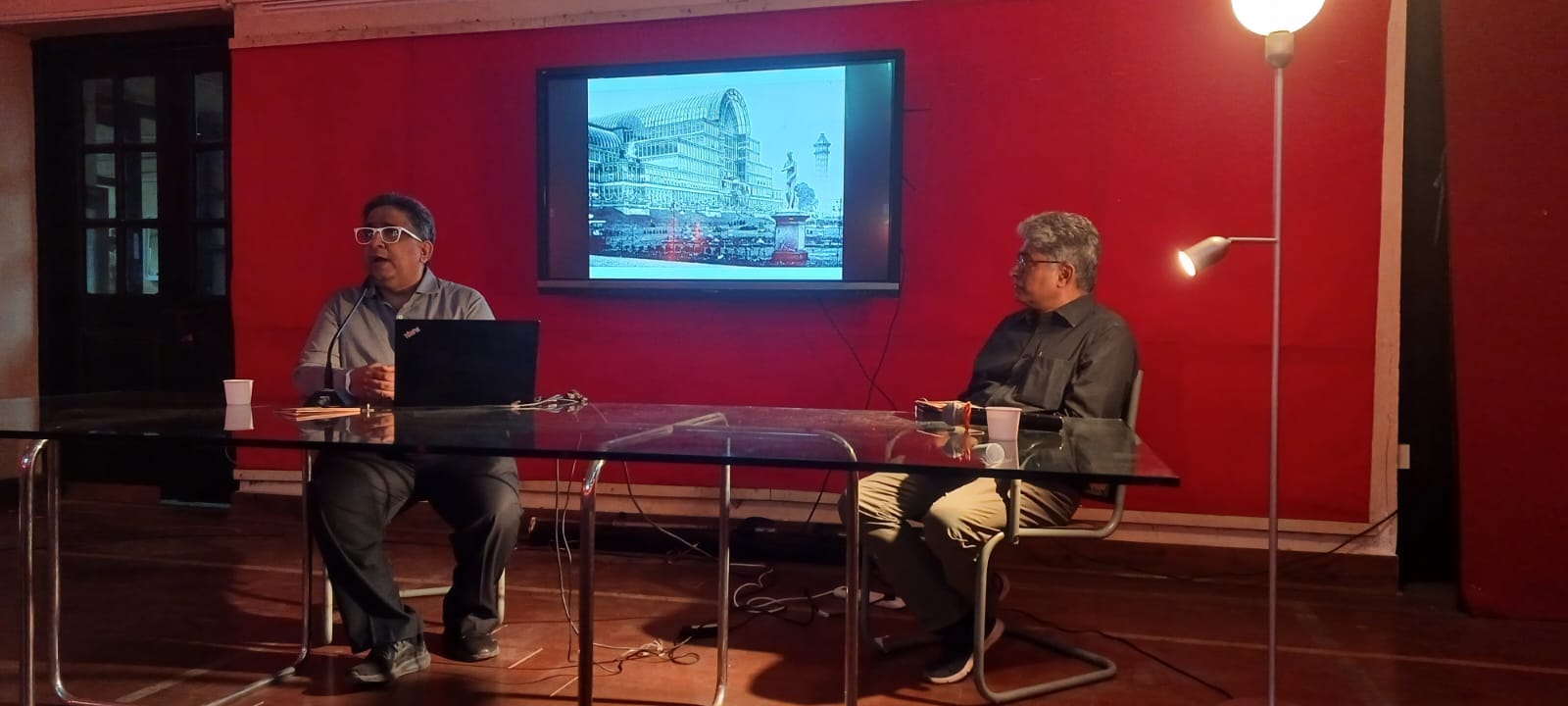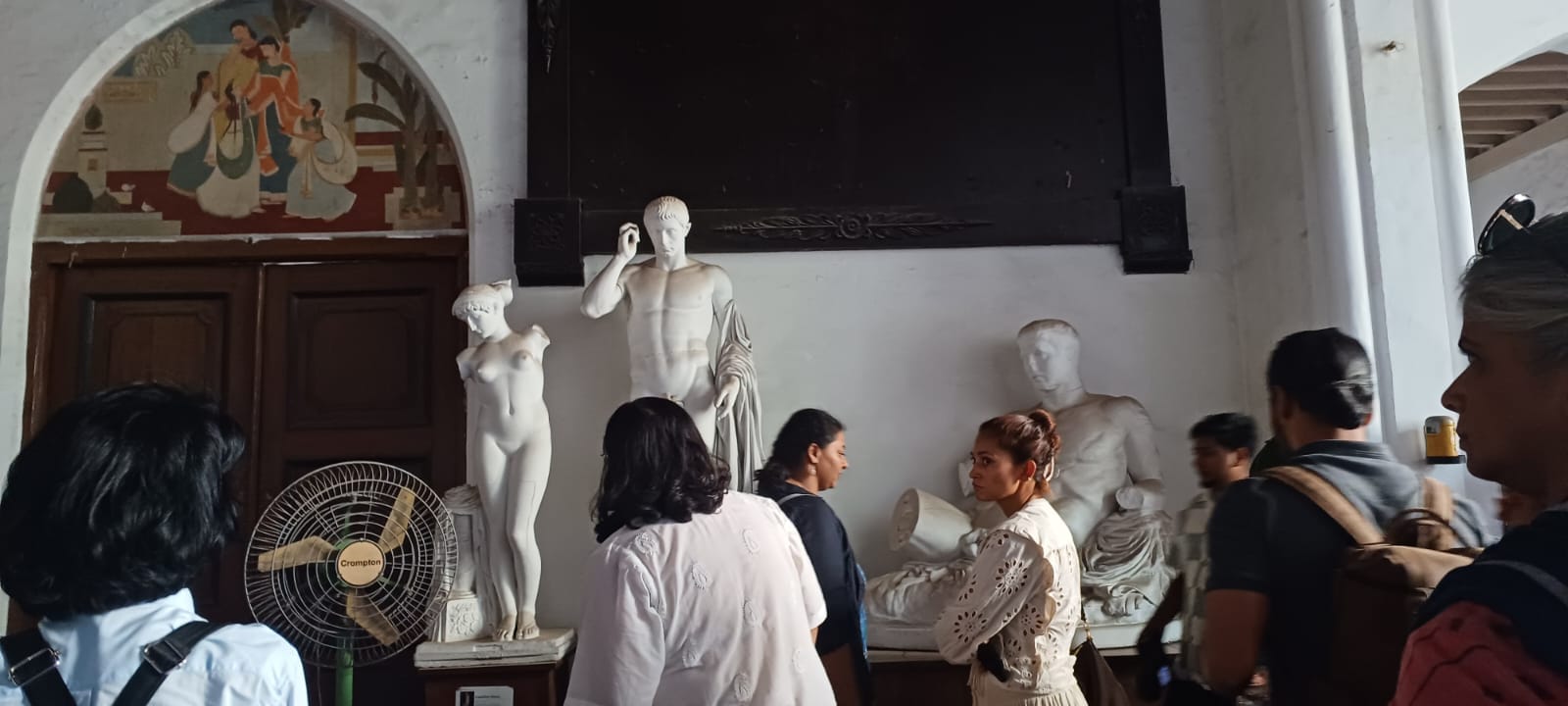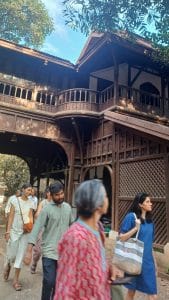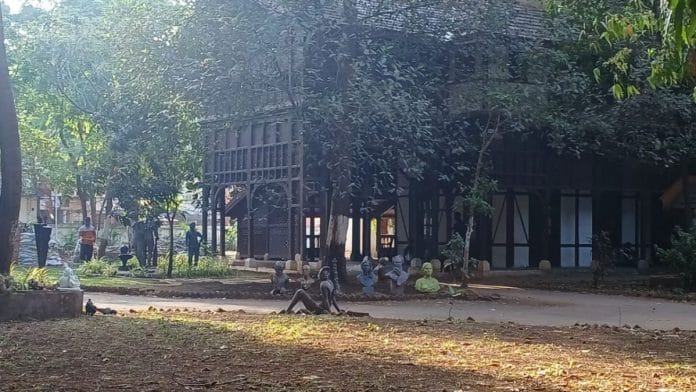Mumbai: The names of Raja Ravi Verma, MF Hussain, SH Raza, and Dadasaheb Phalke find a place in some of the world’s most elite exhibitions and museums. What is rarely acknowledged is how their alma mater—the JJ School of Arts—is a museum in itself.
On 17 March, the DAG (formerly Delhi Art Gallery) attempted to unpack the history, heritage, and architectural spectacle of the institute through a guided walk. This is part of an exhibition series that explores Mumbai as a museum.
“The JJ School is a rich pool of history, with the last building on the campus built in 1957. It started as the Bombay School of Art and Industry in the 1850s without any masterplan,” said Mumbai-based architect Mustansir Dalvi, who led the walk with architect Vikas Dilawari.

Attended by about 40 people, including urban planners, students, and artists, the walk explored how the School is a microcosm of the city’s architectural evolution—from the Bombay Gothic, Neoclassical, Edwardian Baroque, and Bungalow architectural styles.
As the walk progressed through the campus, a look at the buildings revealed the School’s rich history, today shredded in a modern-era revamp. Students worked in the iconic Kipling House and halls as the participants of the walk crossed classrooms filled with Greek-style sculptures.
The School has come a long way since its foundation. While it started with a European prerogative to improve Indian craftsmanship, today, it influences the most crucial developments in Indian art history with local fusion.
With its Neo-Gothic architecture—consisting of pointed arches and spires—the campus showcases how European architecture influenced Mumbai.

Indian art scene
The School’s journey mirrors the coming-of-age of the Indian art scene, thanks to the early influence of its European masters, John Lockwood Kipling and John Griffiths. These artists incorporated European formalism and realism in the School with an industrial arts purpose.
“When the School of Art was built, Neo-Gothic architecture was incorporated for the first time in Mumbai, inspired by the ornamentations of the Hebrews, with its secular features. What makes this architecture relevant to India is the addition of local flora and fauna by Kipling, expanding across Bombay,” said Dalvi.
Even though Kipling stayed in Mumbai briefly, his ideas profoundly impacted the cityscape. This can be seen in buildings like the Victoria Terminus (now Chhatrapati Shivaji Terminus), completed 28 years after he left the city and settled in Lahore.
Another iconic example of Kipling’s influence on local works is Mumbai’s Municipal Corporation Building, designed by FW Stevens, which prominently features lions in its architecture and seal.
Participants of the walk, old and young alike, wondered about the unique features of the buildings and their design. A cross-shaped window, differently shaped stones on the buildings, and a verandah made with timber were just a few of the things that caught their eye.
Also read: Ambaran puts Jammu on Buddhist map. Delhi exhibition to Chenab cruise, govt is promoting it
Kipling House
The Dean’s Bungalow at JJ School, which was built in 1882, is now known as the Kipling House. A metal ornate bust rests here in honour of Rudyard Kipling, the famous author of the novel, The Jungle Book (1894), and the son of John Lockwood Kipling, who was born on the campus.

John Lockwood Kipling stayed at the campus for only eight years, and shifted to Lahore by the mid-1860s. “The bungalow was built in 1882 and it is unlikely that Rudyard was born in the bungalow, contrary to popular imagination. What is certain is that he was born on the campus but probably in a tent,” said Dalvi.
Right next to the Kipling House lies the Applied Arts building, once known as the Indo-British Institution and housing the Sydenham College. Designed by Cowasjee Marzban, one of the few Bombay-based Indian architects of Neo-Gothic buildings, as an orphanage for war victims, its unique feature is polygonal masonry—each stone has several sides.
Beside the Applied Arts building is the Anjuman Islam building, which earlier housed the Sacred Heart Church until the 1920s. “In the old photographs, one can see the church here, also mentioned in Rudyard Kipling’s autobiography, later demolished for unknown reasons. One can only imagine the present-day building as the church Kipling must have once passed through,” said Dalvi.
(Edited by Prasanna Bachchhav)






